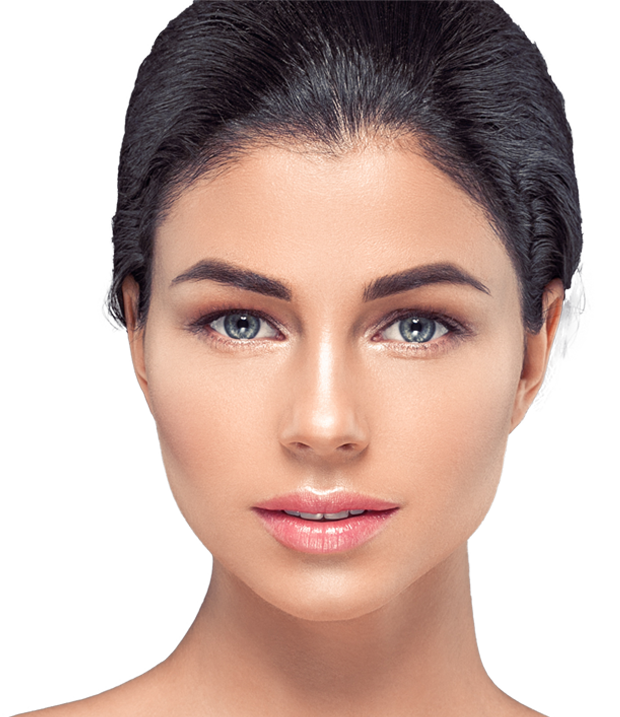

Reasons for a Revision Rhinoplasty
Rhinoplasty is a procedure that is very common but also very complex. This duality contributes to a nationwide revision rhinoplasty rate of 15% due to the failure to meet expectations. It is important to note that my rate of revision for his own primary cases are far less than that standard rate (low single digits). Revision rhinoplasty, or Secondary Rhinoplasty, refers to a second rhinoplasty undertaken to improve upon or correct flaws created by a patient’s first rhinoplasty.Tertiary rhinoplasty refers to a second revision, the third surgery. I approach both of these challenging surgeries with the required degree of professionalism and dedication to achieve successful results. The stakes are very high for patients desiring revision rhinoplasty because they suffer from the compounded disappointment of not achieving their initial goals, often acquiring additional flaws, and mounting expenses. I respect the solemn and profoundly important nature of a patient’s needs and desire as it relates to revision rhinoplasty. I strive to identify features that can be improved, set reasonable expectations, and push for patient satisfaction in every way possible.
Because of my interest and experience in this challenging area of nasal surgery, I have a significant number of patients referred to me from outside my practice (i.e from surgeons in Austin, Texas and beyond not experienced in the complexities of revision rhinoplasty in Austin). I also have patients visit me from other cities in Texas and from other states solely to address their revision rhinoplasty concerns.

How Revision Rhinoplasty Works
Revision rhinoplasty requires attention to the initial untreated defect, changes created in the prior procedure, and reducing the deleterious effect of scarring. I consider open rhinoplasty to be the first choice for moderate to major revision rhinoplasty. The closed or intranasal approach can be used for very minor, focused revisions that address a single flaw, but most revision rhinoplasties are complex enough that increased visualization and access to the involved structures is required. This is afforded by the open approach. The initial priority is to free the major components of the soft tissue envelope, the skin, and subcutaneous tissue from the scarred interface of the skeletal tissues, the bone, and the cartilage, which all lie underneath. Attention must also be paid to releasing the lining (mucosa) of the nose, which is often scarred in the initial procedure.
After liberating the soft tissues, the underlying structures, including the bone and cartilage, are assessed to get clues as to their original state prior to the first rhinoplasty. I encourage patients to bring in photos of their nose in its initial state as combining the information gained from reviewing the photographs with that which is learned from the intraoperative evaluation gives a clearer picture of the original anatomy. This process of learning about the past can be likened to the work done by a detective or an archeologist, creating an understanding of the past using limited clues available in the present. The findings are usually that the undesired appearance relates to tissues, bone, and most often, cartilage that are either weakened, damaged, or in many cases missing. With a sense for the original anatomy, details regarding the changes, both good and deleterious, from the first rhinoplasty are noted.
Following an interoperative evaluation the information gathered is cross referenced with the plan that was generated during the preoperative evaluation of the external appearance to correlate external flaws to internal anatomy. Much of the shape of the nose is dictated by the structure and arrangement of the underlying bone and cartilage therefore. In any rhinoplasty, but especially in a revision rhinoplasty,these tissues have to be shaped into the structure that will yield the desired external appearance.
The process of shaping, controlling, and supporting these previously altered, and thus potentially injured, missing tissues requires cartilage grafts to help modify, restore and improve the structure of the nose. Grafting refers to adding small amounts of cartilage to the structure to precisely correct and rebuild those tissues that are in need of support. The purpose of the cartilage grafts is not to increase the size of the nose per se; it is to restore lost structure. To help understand the concept of adding tissue in a revision rhinoplasty, imagine rebuilding or renovating a house damaged by a tornado. Building materials would need to be brought to repair the structure of things that were missing or damaged due to the storm. The same is true for revision rhinoplasty, cartilage needs to be brought in to repair missing or damaged tissue.
The first choice for cartilage grafts is the septum. The septum is the internal partition between the two sides, or passages, of the nose. Cartilage can be borrowed without weakening the support provided by the septum and without creating a hole in the partition. However, in some revision rhinoplasties, the septal cartilage is not sufficient because the septum was used as a graft source in the first procedure or because the grafting needs for the revision exhaust the supply that can be safely harvested from the septum.
When additional cartilage is needed other sources have to be used. The ears and the ribs provide alternatives. Ear cartilage is flexible and thin but does not offer significant strength. There are certain indications for which cartilage with these characteristics is ideal. When this is not the case, rib cartilage is the answer. Rib cartilage is harvested from chest through an incision that is usually between 2 and 3 cm in length (about one inch). In women the incision is placed where the breast meets the chest wall thus the incision is generally hidden in a bra or bathing suit.
Patient Experience
Revision rhinoplasty is performed using general anesthesia and is usually done on an outpatient basis. Small plastic splints are sometimes placed in the nostrils and an external splint is placed on the bridge of the nose. Both of these are removed within 6-8 days. Most patients return to school or work following removal of the splints. On rare occasions, the internal splints may be left in place for up to two weeks. Packing is not routinely used. Swelling and bruising are variable in the degree to which they are present, and their duration, but are generally mild to moderate and last about 7 days.
If cartilage is borrowed from the ear a mild amount of discomfort is experienced in that location for several days. There also may be a small amount of bruising and/or swelling. A small amount of gauze may be placed in the “valley” of the ear for up to one week to reduce both bruising and swelling. No significant appreciable change in the shape of the ear is experienced. If cartilage is borrowed from the ribs there will be a small incision on the chest. Borrowing the cartilage does not create meaningful change in the shape or strength of the ribs or chest. The incision for the rib cartilage harvest is kept as small as possible. It is often as small as 2 cm (less than an inch). In women, the scar ultimately comes to rest in the inframammary fold, where the lower breast meets the chest wall. Thus, it is rarely conspicuous and is concealed in most bras and bathing suits, even two piece tops. When rib cartilage is used there is discomfort in the chest area lasting for one to two weeks.
Get In Touch
Patients respond to Dr. Weinfeld's expertise and caring patient focused approach. If you have any questions about a procedure or are ready to schedule a consultation, please call or fill out the form below.
Office
Phone: 512-559-1376
Office & Surgery Center
Phone: 512-559-1376
This facility is only for cosmetic and non-insurance based procedures. If you seek insurance based treatments or reconstructive procedures, please search for Dr. Weinfeld in his other facility.
*Please verify the location of your appointment.
Connect with us
